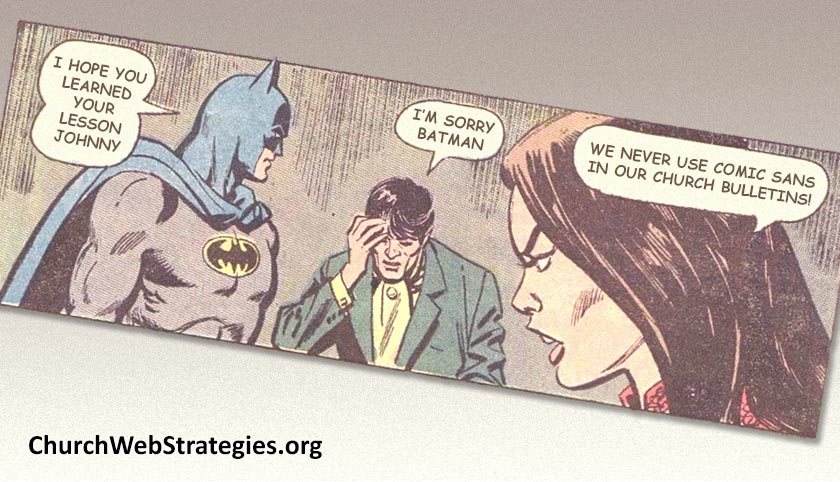The stories in comic books have evolved over the past few decades. They started as short books for young kids. Now they are the most popular movie franchises. This art form has grown and gained new levels of respect. See what helped it gain popularity and what makes it unique. Also, discover what church communications can learn from it.
Writing Matters
Artwork is a key part of comics. Without it, they would be strangely organized books. Yet the longevity of a comic depends on the writing. A good story draws readers into the universe you are creating. It will also draw your visitors to your website. Create a story of your church. Tell it by sharing the actions of your ministries. Showcase how God answered prayers. Bring readers’ emotions into the mix as we share our hardships. Spend time writing your website copy and social media posts. They still matter.
Capturing The Right Moments
It is possible to create a comic showing someone eating soup. Each frame could be a second in time as the spoon gets closer to their mouth. This would also be a very boring comic. A factor in the quality of a comic is what moments the creator chooses to show us. These moments in time should be the most important points in the story. When you create content, do so with those moments in mind. Find the climaxes to celebrate. Seek the lows to help us through. Show the occasional mid-point to remind us how beautiful everyday life can be.
Text and Images
Comics and graphic novels enjoy a unique blend of art and text. Many books feature artwork. Most children’s books rely on it to convey messages. Yet none integrate it as well as comics. Video is the fastest-growing medium on social media. But consider those with slower internet connections. This is especially true of ministries serving those in impoverished countries. For more inspiration, read my article on combining the art forms of text and images.
Earning Legitimacy
Comics became mainstream in the US in the early 1930s. Yet it was not until the 1990s that they gained a sense of legitimacy. They were often viewed as something you stopped reading as a teenager. Thanks to several successful movies, many comic book characters are now household names. It was not long ago that Facebook was a website a handful of college kids knew about. Digital ministry was initially seen as an oddity. Connecting on social media is now as normal as meeting in real life. It is no longer strange that someone found your church because of your website.
Action Item
I hope you walk away from this article with a renewed awe of the great American art form that is the comic book. I also pray you see what helped the comic become mainstream can help your church. Take these lessons to your church communications team. Show them what techniques will best aid your ministries. Then visit your local bookstore and buy a comic book. Appreciate the artwork and story, and find ideas for your next project. If you look for inspiration, you will find it.
This article was inspired by the 99% Invisible podcast, Speech Bubbles: Understanding Comics with Scott McCloud
Photo courtesy of Rich Anfoly

